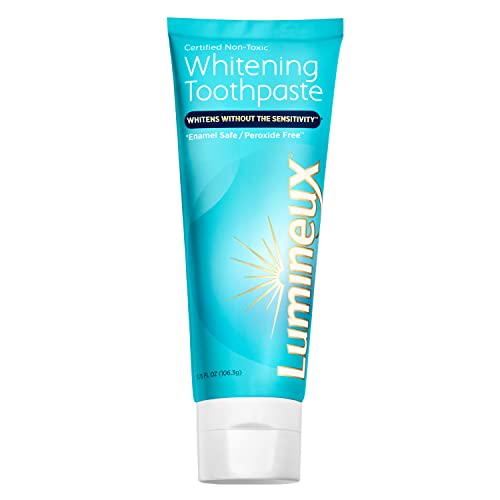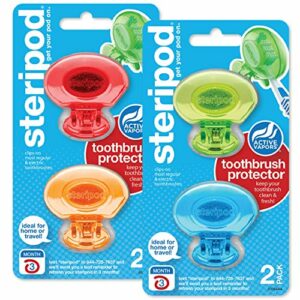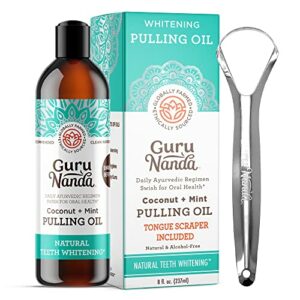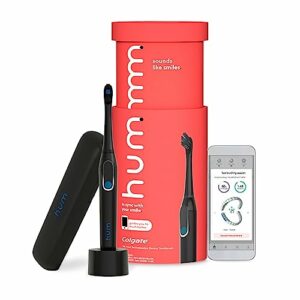In our step-by-step guide, “How to Make Non-toxic Toothpaste at Home,” we aim to provide you with an easy and cost-effective solution for creating your own toothpaste that is free from harmful chemicals. We understand that many commercial toothpaste brands contain ingredients that may cause concerns for some individuals, such as artificial flavors, preservatives, and potentially toxic substances. Our guide will walk you through the process of making your own toothpaste using natural and safe ingredients that are easily accessible. By following our instructions, you can take control of what goes into your oral care products, ensuring a healthier and more sustainable option for you and your family.
Protect your oral health with these top-rated non-toxic toothpastes
Gathering the Ingredients
To make non-toxic toothpaste at home, you will need a few simple ingredients. Here is a list of what you will need:
- Baking soda: Baking soda helps to gently remove stains and plaque from your teeth.
- Coconut oil: Coconut oil has natural antimicrobial properties that can help to promote oral health.
- Essential oils: You can choose essential oils like peppermint or spearmint to give your toothpaste a refreshing flavor.
To start making your toothpaste, follow these easy steps:
- Take a small bowl and add 2 tablespoons of baking soda.
- Next, add 2 tablespoons of coconut oil to the bowl.
- Mix the baking soda and coconut oil together until they form a smooth paste.
- Add a few drops of your chosen essential oil for flavor and stir well.
- Your homemade non-toxic toothpaste is now ready to use!
By using these simple ingredients, you can create a natural toothpaste that is free from harmful chemicals. Enjoy the benefits of a healthier and more sustainable oral care routine.
Mixing the Ingredients
To combine the ingredients together in a bowl and stir them until they form a smooth paste, begin by gathering all the required ingredients and placing them in a clean mixing bowl. Make sure you have measured out the correct quantities of each ingredient as mentioned in the recipe.
Next, take a large spoon or a whisk and use it to gently mix the ingredients together in the bowl. Start by making small circular motions, gradually incorporating all the ingredients. Make sure to scrape the sides and bottom of the bowl to ensure that everything is well-mixed.
Continue stirring the mixture until you achieve a smooth paste consistency. This may take a few minutes of consistent stirring, ensuring that there are no lumps or pockets of unmixed ingredients. Be patient and thorough in your stirring to ensure a homogeneous mixture. Once you have reached a smooth paste, you can proceed to the next step of the recipe.
Adding Flavor and Freshness
To add flavor and freshness to your toothpaste mixture, we suggest adding a few drops of peppermint or spearmint essential oil. Start by preparing your toothpaste mixture according to your preferred recipe. Once the mixture is ready, carefully add a few drops of either peppermint or spearmint essential oil. The exact number of drops will depend on your personal preference and the strength of the oil, so start with a small amount and gradually increase if desired.
After adding the essential oil, thoroughly mix the toothpaste to ensure that the flavor is evenly distributed. You can use a spatula or a spoon to gently stir the mixture until it is well combined. Take a moment to smell the toothpaste and adjust the amount of essential oil if needed. Remember that a little goes a long way, so it’s better to start with a smaller amount and add more if desired. Finally, transfer your flavored toothpaste into a suitable container for storage, such as a jar or a tube, and make sure to label it accordingly.
Storing the Toothpaste
To transfer your toothpaste into a clean, airtight container for storage, follow these simple instructions. First, gather all the necessary materials: a clean container with an airtight seal, a spatula or spoon, and, of course, your toothpaste tube. Ensure that the container is thoroughly washed and dried before proceeding.
Next, remove the cap or nozzle from the toothpaste tube and cut off the end of the tube, near the opening, using a pair of scissors or a utility knife. This will allow you to access the remaining toothpaste inside. Place the cut end of the tube over the opening of the clean container and gently squeeze to transfer the toothpaste. Alternatively, you can use a spatula or spoon to scoop out the toothpaste and carefully transfer it into the container. Be sure to scrape the tube’s interior to get every last bit of toothpaste.
Once the toothpaste is in the container, press down on the surface to remove any air bubbles and ensure a tight seal. This will help prevent the toothpaste from drying out or becoming contaminated. Finally, close the container tightly and store it in a cool, dry place away from direct sunlight. By following these instructions, you can easily transfer your toothpaste into a clean, airtight container for long-term storage, keeping it fresh and ready to use whenever you need it.
Using the Homemade Toothpaste
To use the homemade toothpaste, start by applying a small amount of it onto a toothbrush. Make sure to use a clean toothbrush that is in good condition. Gently squeeze the toothpaste onto the bristles, ensuring that only a small amount is used.
Once the toothpaste is on the toothbrush, begin brushing your teeth as you normally would. Hold the toothbrush at a slight angle towards your gums, and use short, gentle back-and-forth motions. Make sure to cover all areas of your teeth, including the front, back, and chewing surfaces. Take your time and be thorough, spending at least two minutes brushing.
While brushing, pay attention to your technique and ensure that you are not applying too much pressure, as this can damage your gums and tooth enamel. Rinse your mouth thoroughly with water after brushing to remove any leftover toothpaste. Remember to brush your teeth at least twice a day, ideally after meals, for optimal oral hygiene.
By following these simple instructions and incorporating the homemade toothpaste into your oral care routine, you can maintain a healthy smile and promote good dental hygiene.
Promoting healthier dental care
In conclusion, we have explored the guide on how to make non-toxic toothpaste at home, and it is evident that the benefits of taking this DIY approach to oral care are numerous. By using natural ingredients such as baking soda, essential oils, and coconut oil, we can avoid the harmful chemicals found in commercial toothpaste. Making our own toothpaste not only promotes a healthier smile but also allows us to have complete control over what we put in our mouths. Furthermore, the cost-effectiveness and sustainability of homemade toothpaste make it a practical and eco-friendly choice. So, let us take charge of our oral health by embracing the homemade toothpaste revolution and enjoy the long-term benefits it brings.
Essential Supplies
Creating a Natural Smile
Gentle and Effective Application of Non-toxic Toothpaste
- Squeeze a pea-sized amount of non-toxic toothpaste onto a soft-bristle toothbrush
- Gently brush your teeth in circular motions, making sure to cover all surfaces of your teeth – front, back, and chewing surfaces
- Pay special attention to your gum line, as bacteria tend to accumulate there. Angle the toothbrush at a 45-degree angle towards your gums and brush in a gentle, circular motion
- Brush your tongue as well, as it can harbor bacteria and contribute to bad breath. Use gentle strokes from back to front
- Spit out the toothpaste after brushing, but avoid rinsing immediately. Leaving a small amount of toothpaste on your teeth can help with the remineralization process. You can rinse your mouth with water after a few minutes if desired
- Remember, it’s important to brush your teeth at least twice a day – once in the morning and once before bed. Additionally, don’t forget to replace your toothbrush every three to four months or sooner if the bristles become frayed. Happy brushing!




























